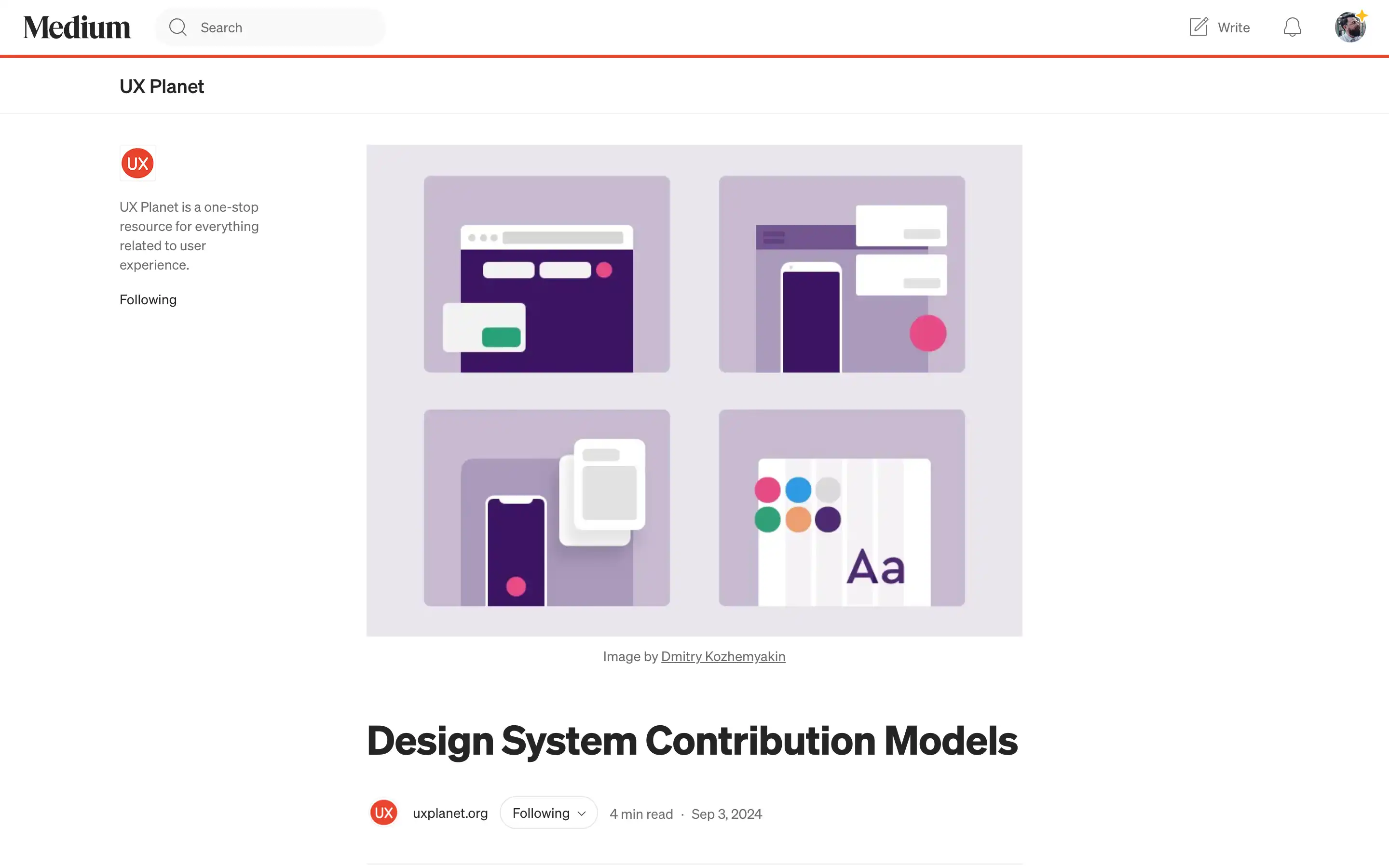UX Planet’s article comprehensively explores how leading companies manage their design systems. It emphasizes the significance of effective contribution models for ensuring innovation, maintaining consistency, and fostering collaboration within design systems. These models aim to streamline processes while preserving the systems’ quality and usability.
Nordhealth adopts a hybrid model, where contributions are vetted by a central team to meet standards like accessibility and usability. This approach combines centralized oversight with collaborative input, allowing innovation without sacrificing quality.
Pluralsight employs a waste reduction model, emphasizing the efficient reuse of components and reducing redundant efforts. Meanwhile,
Canonical prioritizes code quality through a decision tree framework, ensuring that contributions integrate seamlessly into their system while meeting stringent technical standards. Together, these examples illustrate varied but effective approaches to balancing creativity with the structured needs of design systems.







